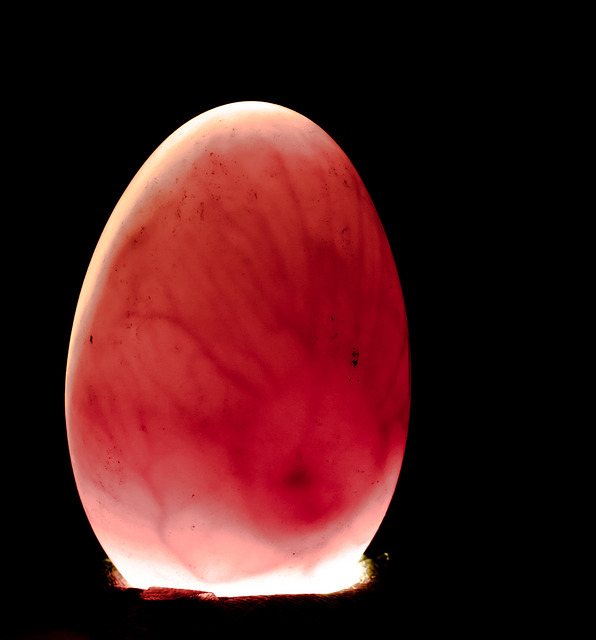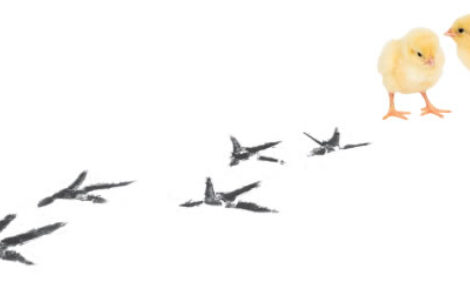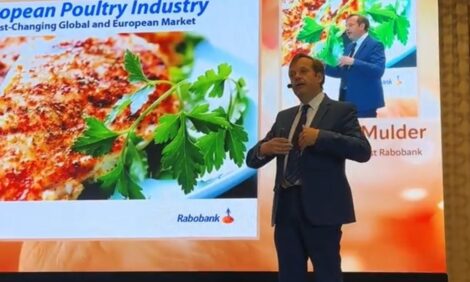



No More Culls? Male Layer Chicks Might Soon Be Spared Death Sentence
Male layer chicks form a huge welfare conundrum for the egg industry around the world, writes The Poultry Site's Editor Alice Mitchell.The male chicks produced by layer breeds are not as suitable for meat production as today’s specialist broiler breeds, meaning it is not efficient for poultry producers to raise the birds. Instead, they are macerated or gassed soon after hatching.
The total number of male chicks killed could be as high as 3.2 billion male chicks across the world every year, according to In Ovo, a Dutch company aiming to solve the problem.
.jpg)
Whilst rules and regulations in many countries ensure that hatcheries use these methods to cull the chicks humanely, having to cull any chicks at all is an issue for many animal welfare campaigners.
From the egg industry’s point of view, such chick destruction means that half of all the birds hatched are worthless, so hatchery space, time and money are all wasted.
What are the alternatives?
Researchers in several different countries are all working on ways to determine the gender of the developing embryo at a much earlier stage, so that male eggs can be removed before getting near hatching. These eggs could then be used for alternative purposes, such as vaccinations or pet food, to avoid waste.
In Ovo co-founder Wouter Bruins started work on the issue in 2011 while studying at the University of Leiden.
Since then, his company has developed a way to accurately identify the gender of the embryo by measuring the concentration of a certain molecule, known as a ‘biomarker’ for the chick’s sex.
“That was actually our major breakthrough of the last year, finding the biomarker,” says Mr Bruins. “We spent about €800,000 to get that molecule.”
To perform the gender test, the team at In Ovo take a tiny droplet of fluid from within the allantois – a self-contained reservoir adjacent to the yolk lined with blood vessels – which Mr Bruins described as the “waste bin” of the embryo within the egg. They then study the composition of the sample using mass spectrometry and determine the concentration of the biomarker.
The test is performed on nine-day old eggs, well before a cut-off point Mr Bruins has set at 11-and-a-half days into the embryo’s development. For Mr Bruins, it’s important to determine the chick’s gender at this stage because 11 days is thought to be the point at which the embryo begins to feel sensation.

Having established proof of concept for the technique, In Ovo is now working on automating the test so it can be applied at larger scales. The company is developing a mechanised process that will sample, screen and sort the eggs. Mr Bruins hopes to see their machine on the market around the beginning of 2018.
Around the world, a number of projects are exploring various other ways to resolve the issue. “It’s sort of a race now,” says Mr Bruins, citing potential competitors in Germany, Canada and Israel. “The first one that hits the market is going to win out.”
However, there might be a more straightforward solution. Some people believe the answer to the chick-culling conundrum is to use a ‘dual purpose’ breed of bird, and return to time-honoured methods of using female birds for egg production and males for meat.
In two projects, in Germany and Switzerland, researchers are currently looking into how dual-purpose breeds could work in the commercial poultry sector.
The German study is comparing conventional and dual-purpose breeds using a set of parameters that includes welfare, animal behaviour, disease resistance and slaughter conditions. The researchers are also looking at ways to optimise feed composition, housing and management to decrease the costs involved with farming these less efficient breeds.
Project leader Professor Silke Rautenschlein says dual-purpose breeds offer a number of advantages over the new egg-sexing technologies, the most important being that the chickens are available now.
“At this point it is still not clear when and if the in ovo gender technology will be really available and commercially usable in the near future.”
“In addition,” she says, “the dual-purpose chicken not only avoids fully the killing of male layer-type chicks, it also reduces the risk of cannibalism when they have intact beaks, which is a significant challenge for commercial layer-type birds under field conditions.”
Meanwhile, the Swiss research programme is focusing on the food-security issues that would result from the lower feed conversion rates of dual-purpose breeds. These breeds would require more feed grains to produce the same amount of meat and eggs – grains that could potentially be used in human food.
Professor Michael Kreuzer from the Swiss research project says the consumer issues arising from using these breeds would include smaller eggs and less favourable cuts of meat, as well as higher prices caused by the reduced efficiency in poultry production.
Both projects will be investigating how consumers might react to these different, costlier poultry products.
Wouter Bruins says that while he believes dual-purpose breeds can be a great niche product, he thinks the costs associated with rearing and managing them would be too great for commercial production to become widespread.
Even if these research efforts bear fruit and culling can be avoided, some campaigners still would not be happy with the egg industry’s welfare measures.
Isobel Hutchinson from the charity Animal Aid says: “Whilst it would represent some progress if male chicks were no longer gassed to death, the egg industry would still be responsible for shocking animal suffering on a massive scale.
“Even so called ‘higher-welfare’ systems can involve birds being kept in crowded sheds, with only limited outside access.”
Wouter Bruins admits that his method is unlikely to lay all concerns to rest. But he suggests that most egg consumers buying higher-welfare products such as free range eggs today would be happy to see an end to male chick culling as soon as possible.
Further Reading
This article originally appeared in the September 2016 edition of The Poultry Site Digital. To read other articles from this issue, focused on poultry welfare, click here.








